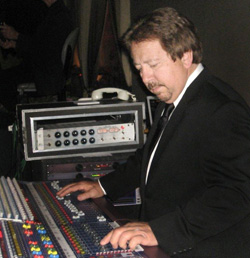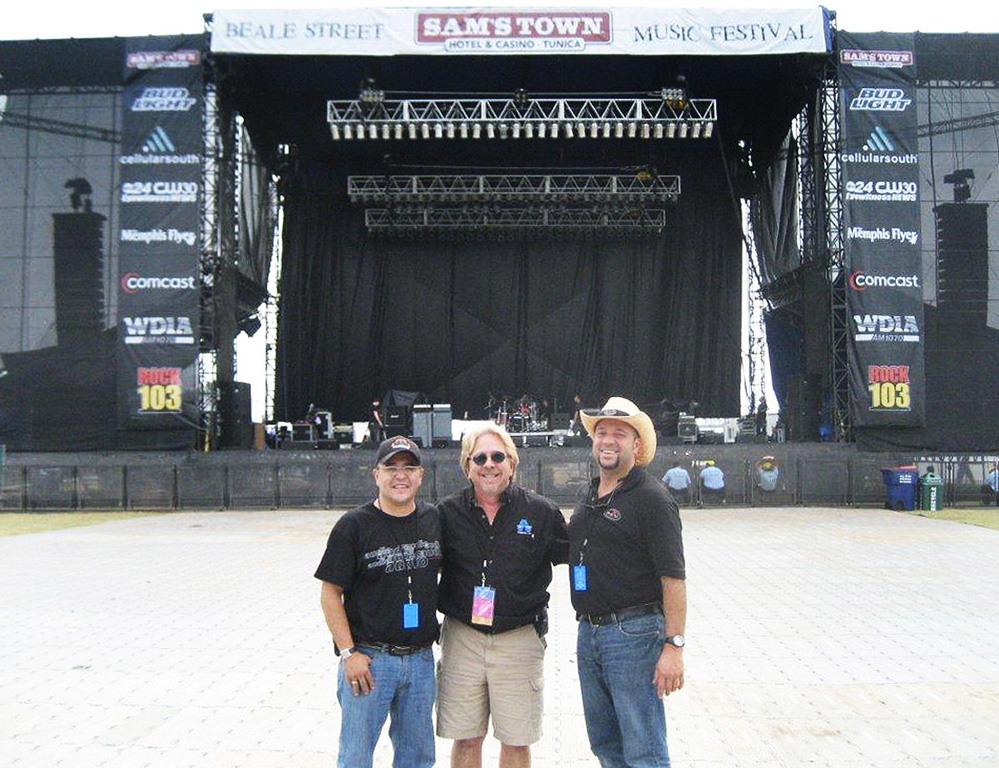
But that was easier said than done. “The system was four chrome, Buddy Holly-style microphones, an Altec A7 combination horn/bass reflex box with a bullhorn mounted on it on either side of the stage, a 4-channel mixer with no EQ and a 40-watt tube amplifier – there weren’t even any monitors.”
Even at this early point in his career, the relationships he’d already formed served him well, along with a bit of ingenuity. “First thing I’d do in a town is get the phone book out and see what music stores and sound companies were around, and I compiled that information into my own little black book.
“So for the first Sheppard gig,” he continues, “I tapped my little black book and came up with C.V. Lloyde of Champaign, the first production company to tour with the rock band Boston, and they came to the rescue. Just like the iPhone is now, that little black book was a key piece of gear then.”
Borne’s insistence on maintaining his relationships with other companies and industry professionals also informed his first major purchase after starting Allstar; a Kaypro computer and a dot matrix printer.

It took three months to input the contents of his black book and the stacks of advance sheets he’d accumulated over the years into his database, but when he finished, he was able to mail out more than 5,000 letters and make certain his existing contacts knew about his new venture.
One Piece At A Time
While continuing to freelance as an engineer, Borne ran Allstar out of the basement of his Nashville home and built his inventory, literally, one piece at a time. “I had Perkins cabinets, JBL horns and ‘sugar scoops’—that was the PA. And I had a friend at Peavey who trusted me enough to give me a pair of Mark IV consoles and let me pay for them over time.”
The first full-range boxes he acquired were EAW KF550s and then the venerable KF850s. “They were the size of a refrigerator, but I rode the EAW wave right into the beach,” he says.
Over time, Borne’s measured approach continued to fuel Allstar’s growth as a sound company. As demand grew, however, he realized he would have to expand the scope of his services. “I can tell you, I never wanted to be a lighting guy, but I’d get calls and they’d say, do you do lighting?”
Initially, he contracted it out, but found that the delays involved in the process were passed on to his clients—not an acceptable situation. “I just wanted to tell my client, instantly, ‘yes that’s available, so I diversified into lighting in the mid 1980s.”
Doing otherwise just wouldn’t have been good business, and that’s the only kind of business Borne will do. “It’s a lifestyle. It’s all about relationships. That’s the key word in life. You always want to deliver what you say you will, and that’s why, when we get a client, they stay with us.”
That philosophy has helped Allstar grow substantially over time, allowing Borne to move his inventory from his Nashville home in 1987 through a succession of larger spaces, and finally into the company’s current warehouse in nearby Smyrna. It was a step made possible by the sale of a system that had been an ongoing rental at Sam’s Casino in Tunica, MS.
“That was a key moment, and it was the best investment I’ve ever made,” he notes. “I could have bought more gear, but instead put a down payment on the facility we’re in now. We went from 4,000 to 12,000 square feet, and somehow, the guys filled that up immediately—I’ve yet to figure out how, but it goes to show you how tight we were packed in.”
Since, the company has taken over the remainder of the 24,000-square-foot facility.
